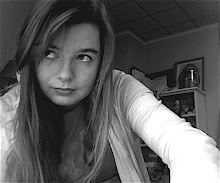Humanity i love you
me up at does
next to of course god america i
pity this busy monster, manunkind
dying is fine but) Death
me up at does
next to of course god america i
pity this busy monster, manunkind
dying is fine but) Death
one t
-- e e cummings
Rhapsody on a Windy Night
What the Thunder Said
-- T. S. Eliot
These Fought in Any Case
The Logical Conclusion
--Ezra Pound
The Desolate Field
A Goodnight
--William Carlos Williams
A Rabbit as King of the Ghosts
--Wallace Stevens
A Million Young Work Men
--Carl Sandburg
-- e e cummings
Rhapsody on a Windy Night
What the Thunder Said
-- T. S. Eliot
These Fought in Any Case
The Logical Conclusion
--Ezra Pound
The Desolate Field
A Goodnight
--William Carlos Williams
A Rabbit as King of the Ghosts
--Wallace Stevens
A Million Young Work Men
--Carl Sandburg
Poems of the American Modernist movement place into vivid imagery, whether with form or with uses of the English language, what most people are merely able to describe as the human mind. These poets, however, take a step beyond what most people are able to comprehend on a direct, that is, a literal, level. Their works encompass the enigmas of existence, throw light into the unexplored recesses of the human condition, and reshape language to give readers glimpses into the mysteries of the mind.
By manipulating the shapes of words, American Modernist poets bring to life images that convey their messages in a powerful way. e e cummings, a leader in the Modernist movement and whose techniques many other writers chose to emulate, fused visual art with poetry. Many of his poems formed pictures that were shaped out of words, for instance, his poem one t, which depicts a snowflake falling. By creating visual interest for readers, the poets of the American Modernist movement were able to capture audiences and to spread their enlightenment.
In a similar way, the sounds and meanings of words were utilized in order to convey an alternate meaning to a poem. In cummings' pity this busy monster, manunkind, wherein he plays on the flaws of humanity. His opening lines "pity this busy monster, manunkind,/ not" warn of the disease that plagues mankind. Other poets also change language to establish their reasonings. Ezra Pound's dedication to the poem The Logical Conclusion expresses his distaste for the ruination of the pleasure that comes from literature due to overstudy and dissection of wonderful works. It reads: "Against the 'germanic' system of graduate study and insane specialization in the Inanities." Here, he plays with the word "Humanities", a word referring to reading and analyzation of literature. The authors of American Modernist poems are able to challenge society and expose the human condition by creatively manipulating language to make powerful assertions.
Other techniques of American Modernist poets include the use of vivid imagery and extended metaphors. In the Wallace Stevens poem A Rabbit as King of the Ghosts, a rabbit at night represents human being in a dream world. The vivid imagery of What the Thunder Said by T. S. Eliot conveys deep meaning rooted in religious stories of the Bible and Hindu mythology. Every word is carefully chosen to set the tone and asks readers to take a closer look at what is being said in each work.
Each poem that emerged from the American Modernist movement is heavy with deeper meaning due to the then-revolutionary techniques utilized by the writers of the time period. The poets' messages about the human condition and their explorations of human minds have touched generations of people and caused many to look past the surface of all works of literature and to explore their own minds. By using dynamic techniques, American Modernists brought to life ideas that had before then merely lain dormant in the minds of humanity. Using visual art in conjunction with words, transforming normal language to add greater meaning, and creating images through metaphors and descriptive diction the poets of the American Modernist movement impacted people throughout the world and brought to light both the flaws and unique abilities and thoughts of humanity.

No comments:
Post a Comment